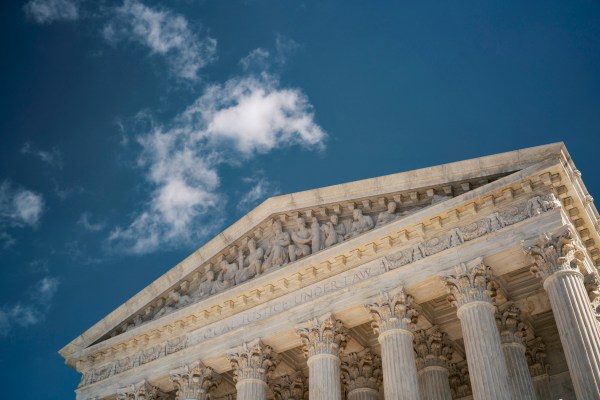For the four months it took President Vladimir Putin to concentrate the Russian forces and firepower to launch what he thought would be a blitzkrieg into Ukraine, the world watched a train wreck in slow motion. Last-ditch efforts by the Biden administration to corral NATO allies into a unified response and disrupt Russian military planning through intel leaks ultimately came up short. On February 23, Russian forces began their full-scale invasion. The war—which has yet to yield the swift regime change in Kyiv that Putin envisioned—has left more than 400 Ukrainian civilians dead and displaced more than 1.7 million more in the two weeks since.
As the war unfolds, questions still loom: Should the international community have acted sooner? Was this a preventable crisis? And why now, three decades after the Soviet Union’s collapse, is Putin pursuing an expansionist campaign to subjugate a people he claims as Russia’s brethren?
While some experts date the war’s origins all the way back to the end of the Cold War in the early ’90s, others point to the United States’ declining global engagement—evidenced by its disastrous withdrawal from Afghanistan last year—as the immediate catalyst. Still others say the assault is simply a way for Putin to avoid a violent overthrow after 20-plus years of leading an increasingly authoritarian state.
Putin answers those questions differently depending on the context and audience. When building a defense for overt military aggression to outsiders, Putin couches his actions in the language of national security concerns stemming from NATO “expansionism” and U.S. hegemony, among other things. But when addressing a domestic audience, he takes direct shots at Ukrainian statehood, making ahistorical appeals to the “Great Patriotic War” and a ginned up threat of Nazism at Russia’s doorstep.
But the Kremlin’s public pretexts all further a similar end: to restore, at least in part, the former Soviet sphere of influence. Putin admitted as much in a 2005 speech before the State Duma, when he declared that “the collapse of the Soviet Union was a major geopolitical disaster [in which] tens of millions of our co-citizens and compatriots found themselves outside Russian territory.” More than 30 years after the socialist state’s defeat in the last century’s great power competition, Putin appears to be embarking on a costly mission to see its partial restoration within his lifetime.
It didn’t take long after the fall of the Berlin Wall for the U.S. and allies to drop their guard.
“People were saying we’ve reached the end of history,” John Bolton, former national security adviser to President Donald Trump and U.S. ambassador to the United Nations under President George W. Bush, told The Dispatch. “The Washington consensus has prevailed. We can have a peace dividend and slash our defense budgets, which the U.S. and almost every European country did. And the Cold War, the last war of the 20th century was over, and there was nothing but sweetness and light ahead.”
But the collective delusion quickly began to crumble. On 9/11, Washington re-learned the importance of addressing security threats before they reach American shores. And the United States’ former adversary in Moscow reasserted itself as a threat to the world’s existing security architecture not long afterward.
“Going back to 2007, the president of Russia—Vladimir Putin—has pursued an avowedly revisionist foreign policy,” John E. Herbst, the former U.S. ambassador to Ukraine from 2003 to 2006, said from Washington, D.C. last week. “His ambitions are not limited to Ukraine.”
A 2007 speech by Putin at the annual Munich Security Conference offered the world, perhaps for the first time, an unobstructed look into what was to come. After cautioning that his coming remarks might seem “unduly polemical, pointed, or inexact,” the Russian president launched into a full-throated tirade against American world order and the NATO alliance.
“One state and, of course, first and foremost the United States, has overstepped its national borders in every way. This is visible in the economic, political, cultural and educational policies it imposes on other nations. Well, who likes this? Who is happy about this?” Putin implored the audience. “[NATO] represents a serious provocation that reduces the level of mutual trust. And we have the right to ask: Against whom is this expansion intended?”
According to John Sipher, a 28-year veteran of the CIA and former head of its Russia operations, Putin has remained steadfast in this messaging ever since. “There’s three big things that Putin has always said, and he’s been very consistent,” Sipher told The Dispatch. “He wants the U.S. out of Europe, he wants to destroy NATO, and he wants countries in Europe to be either subservient to him or vassals to Russia.”
A year-and-a-half after Putin’s Munich speech, during a conference in Bucharest, Romania, then-U.S. President George W. Bush and other alliance leaders threw their backing behind bids from Ukraine and Georgia for eventual NATO membership. But the public support—however well-intentioned—may have been strategically misguided without further protection for Georgia and Ukraine.
“At the end of the day, we had to debate about whether they should get the membership action plan or not. And what the heads of state came up with was, in some ways, the worst of all worlds,” said Eric Edelman, the third-ranking civilian at the Pentagon under Bush and former ambassador to Finland and Turkey. “They said, we’re not going to give them the membership action plan, but someday they’ll be members of NATO. So they enraged Putin and in his mind created the notion of their NATO membership as an inevitability, but didn’t extend to them any kind of protection.”
While Edelman and other experts dismiss NATO’s alleged threat to Russia’s sovereignty as the product of Kremlin propaganda, the 2008 conference placed the two former Soviet republics firmly in the West’s camp—and seemingly out of the Kremlin’s grasp—without Article 5 security guarantees to provide for their immediate defense. Putin began his invasion of Georgia just a few months later, recognizing the Russian-backed breakaway states of South Ossetia and Abkhazia and deploying Russian “peacekeepers” to force Tbilisi into an uneven political settlement.
“[Putin] created the status quo that exists today, which blocked Georgia’s ascension into NATO and cemented Russian influence on Georgia for the years to come,” said Iliya Kusa, a Kyiv-based analyst at Ukraine Institute for the Future.
The undertaking came and went with minimal backlash from the West. When President Barack Obama took office shortly afterward, Washington ushered in the now-infamous “Russia reset” in an effort to repair relations with the Kremlin. The administration’s diplomatic blitz sought to involve Moscow in a number of “win-win” initiatives worldwide, such as attempting to curb Iran’s nuclear program and opening Russian airspace to defensive aid shipments to Afghanistan.
But in 2014, halfway through Obama’s second term, Putin launched his first incursion into Ukraine after the Maidan Uprising deposed Kyiv’s Kremlin-backed president. Despite promises by the U.S. and allies to “isolate” Russia in retaliation for its occupation and illegal annexation of Crimea and push into eastern Ukraine, Obama and Putin met face-to-face that same year. Eventually, Moscow secured more one-sided diplomatic agreements—Minsk I and II—which sought to normalize the existence of two rebel states on sovereign Ukrainian territory, the self-proclaimed Donetsk and Luhansk people’s republics. All the while, Moscow continued to engage in negotiations that would eventually yield the 2015 Iran Nuclear Deal.
“[Putin] basically didn’t face any consequences. He got the Minsk agreements in 2014 and 2015, which Ukraine agreed to at the barrel of a gun,” Bolton told The Dispatch. “If they had actually been implemented, he would’ve gotten a large part of what he wanted in Ukraine.”
The repercussions of the West’s inadequate responses to 2008 and 2014 continue to reverberate in the current crisis, both in Putin’s assault on Ukraine and open hostility toward NATO allies.
“Deterrence is all in the head of your adversary,” Edelman told The Dispatch. “I do think a lot of people in the Biden administration do have some recollection of that and realize that they probably under-reacted to Putin. But I think they’re still suffering from some of the same concerns, which are that we don’t want to ‘provoke Putin.’… I would like them to be more focused on what we can do to make Putin worried about provoking us.”
The pattern of NATO appeasement established during the Obama era was followed by alliance infighting under Trump, who frequently butted heads with European partners and moved to reduce the U.S. military footprint in Germany. After longstanding failures by more than a dozen member states to meet the alliance’s financial commitments, Trump even considered dismantling NATO from within, at one point threatening to withdraw Washington from the defensive alliance.
“Putin looked at what Trump was trying to do to NATO and figured: Why interfere when the NATO alliance is having such difficulty with the country that’s nominally its leader?” Bolton, Trump’s former national security adviser, told The Dispatch.
And Trump’s domestic political objectives wore on his diplomatic relations with and military support for Kyiv. “[Putin] saw what happened with Trump and [Ukrainian President Volodymyr] Zelensky and the summer of 2019, which had an extremely negative effect on the bilateral relationship,” Bolton added, referring to efforts by the former president to withhold $400 million in security assistance to Kyiv until it aided in an investigation into his political adversaries. “Zelensky couldn’t have a conversation with Trump without hearing about Hillary Clinton’s server, and Hunter Biden’s income, and this and that and the other.”
And for all its lip service to repairing multilateral ties, the Biden administration also got off to a rocky start with NATO partners. Last spring, President Joe Biden waived sanctions on the controversial Nord Stream 2 pipeline—a conduit connecting Russian supply of natural gas to Germany—despite European concerns that its completion would give Putin undue leverage over the continent’s energy supply. And in September, French officials described a U.S.-spearheaded security agreement with Britain and Australia, known as AUKUS, as a “stab in the back.”
The Biden team also took up the Obama-era “pivot to Asia” in its earliest days in office, sometimes at the expense of military and diplomatic focus elsewhere. “As far as the Biden folks were concerned, it was all about China. The people who were brought into the administration … the strong voices, the strong bureaucratic players were the Indo-Pacific folks,” said Jim Townsend, former U.S. deputy assistant secretary of defense for Europe and NATO, told The Dispatch. “We let our guard down in Europe and we didn’t take [Putin] seriously.”
While Bolton told The Dispatch that Beijing presents the “greatest threat we face in the 21st century,” he added that what happens in Europe will have direct bearing on Washington’s leverage in Asia. “You can’t ignore Ukraine. When Russia makes advances, let’s say in Europe, it strengthens China in the Indo-Pacific if it makes the U.S. look weaker. All of these things are related.”
Afghanistan is a good case study. In addition to creating friction among NATO allies, experts argue that Biden’s rapid and disastrous departure from Kabul projected vulnerability to Moscow.
Retired Lieutenant General H.R. McMaster, former national security adviser to Trump from 2017 to 2018, described the debacle as the “most proximate cause” for Putin’s brazen attack on Ukraine during a recent briefing in Washington, D.C. “If you think of deterrence as an equation of capability times will, I believe our adversaries think our will is just about zero,” he said, adding that Moscow’s 2014 invasion of Crimea came after Obama’s unenforced “red line” in Syria, when President Bashar al-Assad used chemical weapons during the country’s civil war.
“Putin was looking at the U.S. and saying, look, Biden pulled out of Afghanistan and gave it to the Taliban for the sake of 3,000 troops who weren’t even involved in combat,” said Bill Browder, CEO of Hermitage Capital, adding that the withdrawal coincided with periods of domestic uncertainty within other member states. “[Olaf] Scholz is a new German chancellor and hasn’t found his feet. Boris Johnson was at the edge of losing power because of having parties in Downing Street. [French President Emmanuel] Macron is running an election. Putin thought that everybody was weak and undetermined.”
Meanwhile, as Russia began amassing troops and equipment along Ukraine’s borders in 2021, the U.S. continued its support for the Ukrainian armed forces. While the United States’ supply of military equipment to Ukraine has grown incrementally almost every year since 2014, topping out at $1 billion in the first year of the Biden administration, some experts argue that the West’s help was too little, too late—particularly as the window to supply Kyiv with crucial weaponry nears its close and the U.S. tussles with Poland over delivering fighter jets to Ukraine.
According to Browder—who for years has led a push to punish human rights abusers and corrupt government officials worldwide—Putin saw the West’s lack of resolve as an opening to distract from his own dwindling domestic support.
“He’s been a dictator for 22 years. It’s very hard for any dictator to stay in power that long. In the time that he’s done that, he’s stolen an enormous amount of money,” Browder told The Dispatch. “There’s no great history of ex-dictators sailing off into the sunset. There’s no Putin presidential library where he can paint in his spare time and give lectures. He’s either going to end his natural life in office or he’s going to end up getting taken out, so from his perspective, this war is a total survival strategy.”
An October 2021 poll by the independent Levada Center found 42 percent of Russians did not want to see Putin’s re-election in 2024, the highest figure since 2013. As of February 2022, almost four months into his manufactured crisis in Ukraine, Putin’s approval rating is up to 71 percent.
“We’ve got to remember that this whole thing was manufactured. There was no push for Ukraine to join NATO, there was no threat from Ukraine, there was no threat from NATO,” said Sipher, the former head of the CIA’s Russia operations. “There was nothing new here, and he sort of spun up and seized the narrative and made it look like there was this huge crisis.”







Please note that we at The Dispatch hold ourselves, our work, and our commenters to a higher standard than other places on the internet. We welcome comments that foster genuine debate or discussion—including comments critical of us or our work—but responses that include ad hominem attacks on fellow Dispatch members or are intended to stoke fear and anger may be moderated.
With your membership, you only have the ability to comment on The Morning Dispatch articles. Consider upgrading to join the conversation everywhere.